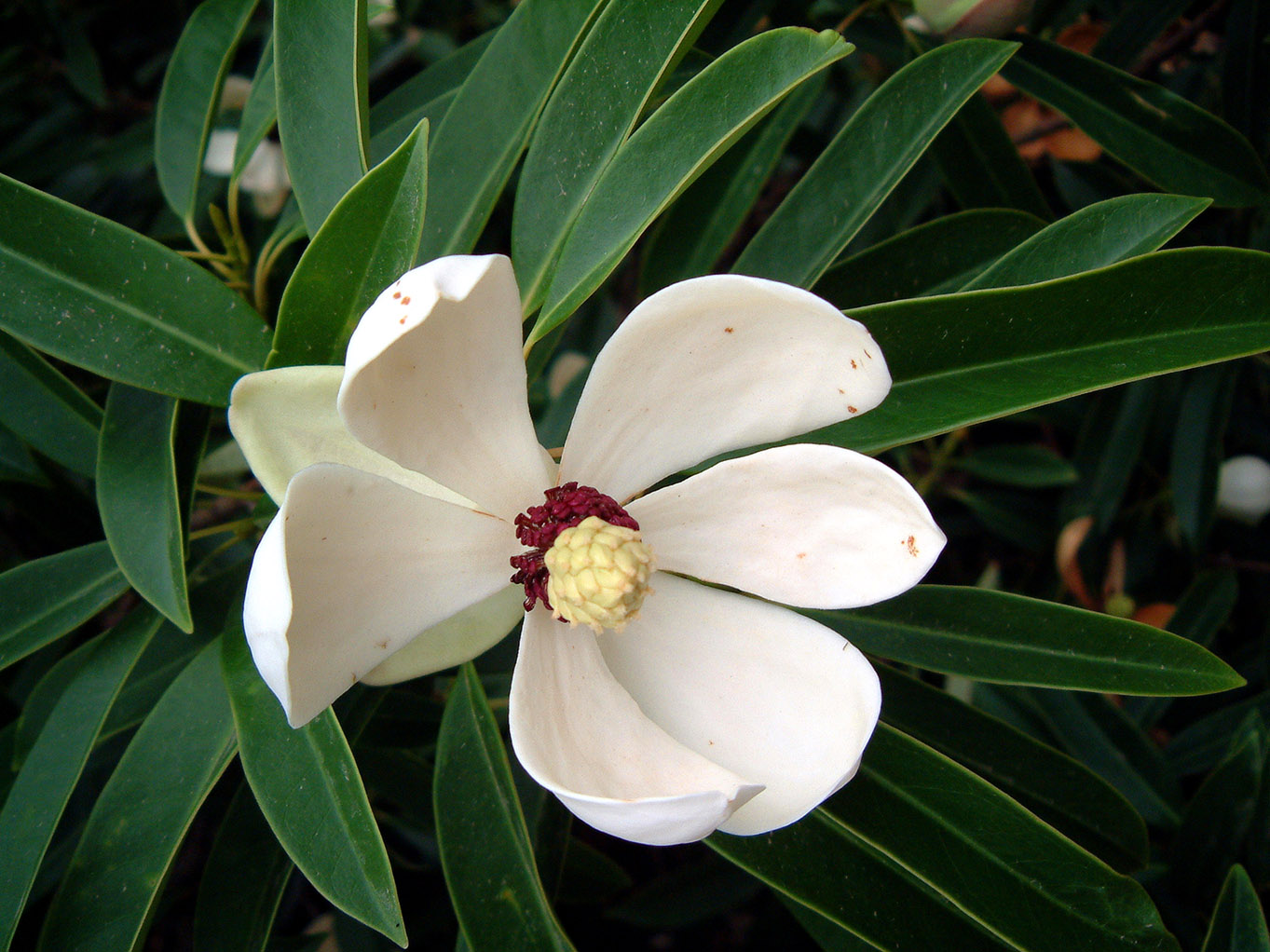NOS
MANGLIETIA
PAGE
Copyright 2003. New
Ornamentals Society. All Rights Reserved.
Lawful for online access only by current society members.
All downloading, printing, saving to media, imaging, screen capture, or
offline use is prohibited.
Duplication by any means, method, or technology is unlawful.
Do not link to this page.
Manglietia yunnanensis is a cousin of Magnolias as you might have guessed from the accompanying photo. The genus of about 25 species are hardly seen in gardens with M. insignis being most common I believe. I had trouble researching it years ago as I had learned to spell it "Maglientia" and Latin habits are hard to break. It is listed after Magnolia and Malus in the few books that cover them. The name is easily mangled if you will.
These bright cupped tepals are just something else next to the red anther ring of the central cone. This photo is not touched up as you can see from the imperfect spots on the tepals. The whole red, green, and white look is hard to beat. For the taxonomically inclined (better watch those folks carefully), it differs from the popular cousins in having up tosix ovules per carpel instead of two.
The leaves are immediately different from even the most rugged evergreen Magnolia. It has a Prunus laurocerasus, even Persea quality to the folded foliage. They're very narrow (about a inch), extremely thick, very dark green, and having a translucent pale margin. Other species like M. hookeri, M. fordiana, and M. insignis usually have wider blades of 2-3 inches across and can be up to 10 inches long.
Hardiness is questioned, undoubtedly USDA 8 is solid for common species. However this species has done very well at the Raulston Arboretum in 7b - even enduring two feet of snow and temps to 20 degrees for a short period.
If had an extra acre and was now breeding anything else, I'd forget about them and get a jump on this genus. It's promise for pinkish flower colors, rich fruit colors, leaf qualities, and growth forms are endless. Let's some hybrids on trials folks!
Click image to enlarge.
LCH
